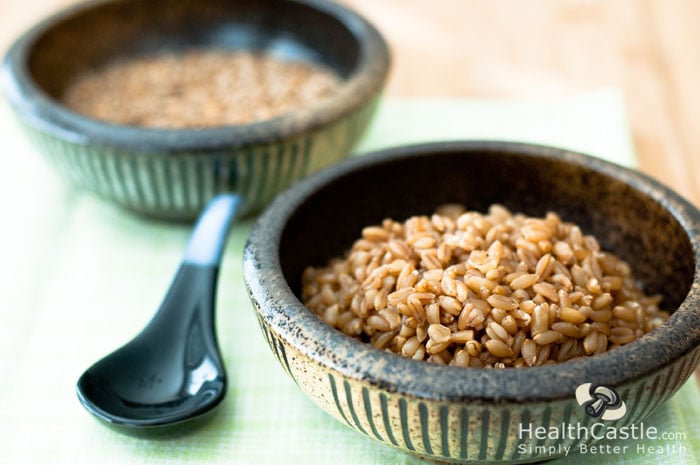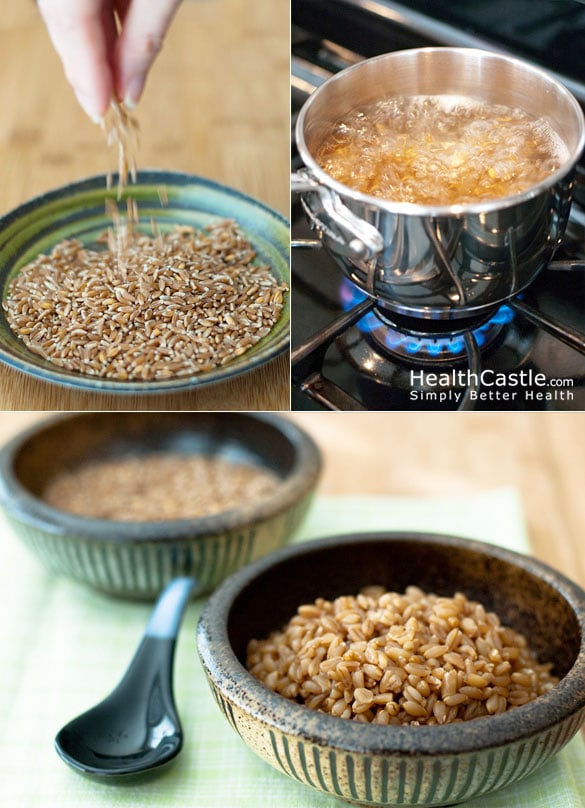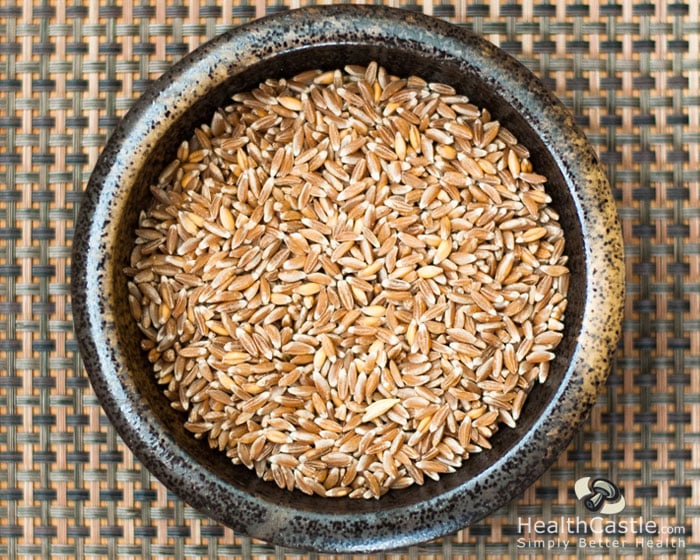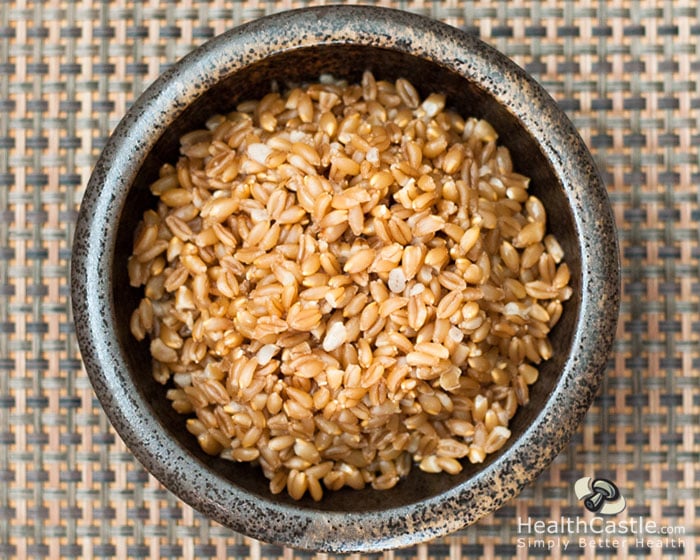
Written By: Sofia Layarda, MPH
Title: Master of Public Health
Alumni: University of California, Berkeley
Last Updated on:


If you enjoy discovering new whole grains to add to your meal rotations, this month’s whole grain should give you a new way of enjoying wheat. Farro is the talian name for an ancient wheat strain known as emmer wheat. It is sometimes confused with spelt, but is actually an older strain than spelt. Farro is available whole (intact grain), cracked (whole grain cracked into smaller pieces), pearled (perlato), or semi-pearled (semi-perlato). Go for the whole or cracked form, where the grain – including the bran – is still intact. Otherwise, choose semi-pearled because it still retains more of the bran (where the nutrients and fiber are found) than the pearled version.

Table of Contents
Starting Amount: 1/2 cup raw

Pre-Soaking Requirement: Yes. Most suggests soaking whole farro overnight. We only soaked for 1 hour. It turned out alright!
Pre-Rinsing Requirement: Yes for whole farro. Rinse pre-soaked grains under running water, then drain.
Cooking Liquid: 1 cup water (or 1.5 cups for cooking whole farro)
Cooking Time: Add pre-soaked, pre-rinsed farro to water. Bring to a boil, then reduce heat and simmer for 15 to 20 minutes. If you did not soak it overnight, simmer for about 40 minutes. The kernels should be tender but not split, and they should have a nice chewiness instead of being mushy. Drain, rinse, and use.
Resulting Yield: 1 cup

Nutritional Information (per 1/2 cup cooked farro)
Tell Us: How do you usually eat farro?
Alumni: University of California, Berkeley – Sofia believes in bringing back fun and pleasure into everyday eating. She loves cooking, and is constantly experimenting with ingredients, creating recipes and trying them out on family and friends. Her latest interest lies in finding realistic and practical ways of environmentally-friendly food/eating habits.
farro, home cooking, how to cook, vegetarian, whole grains